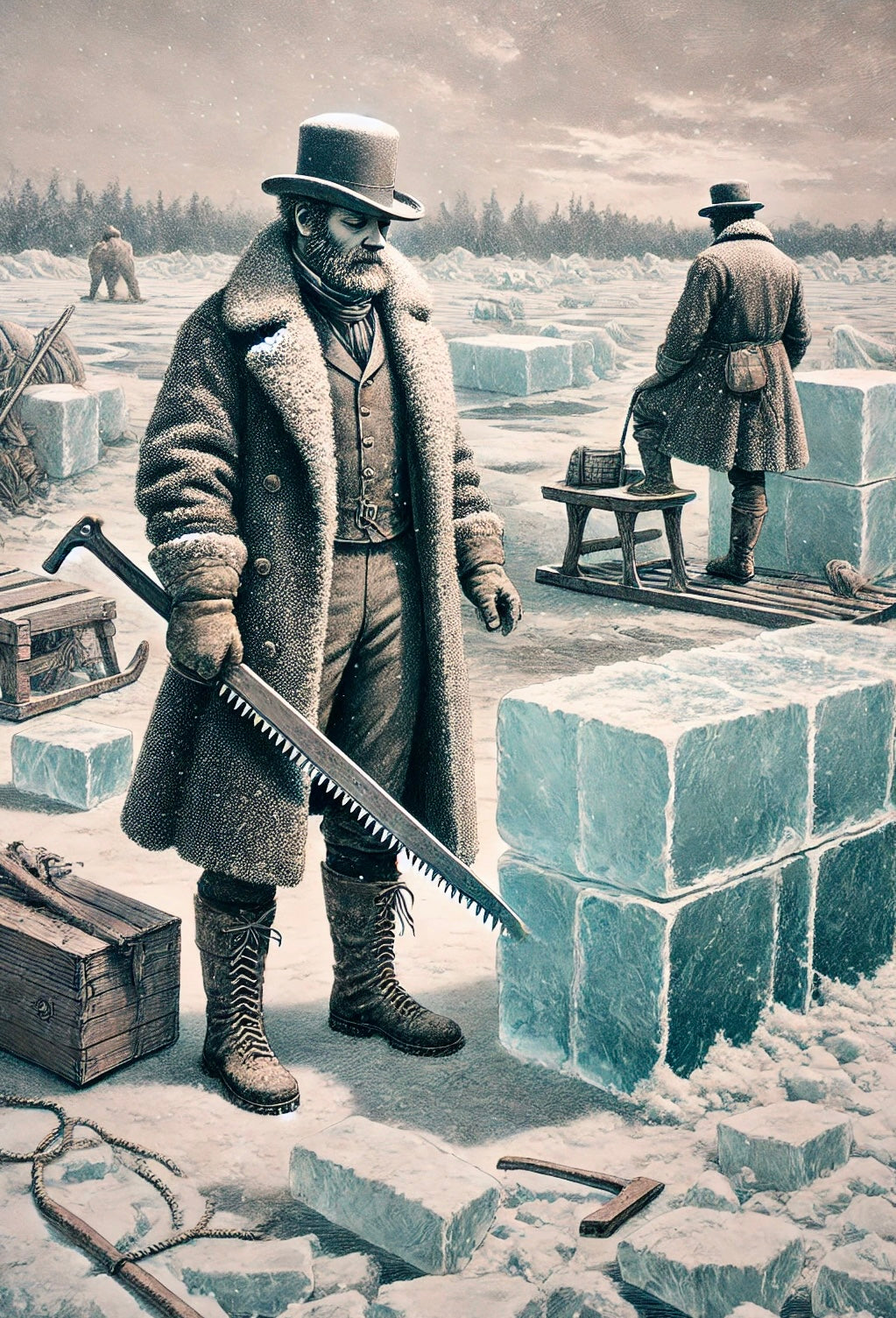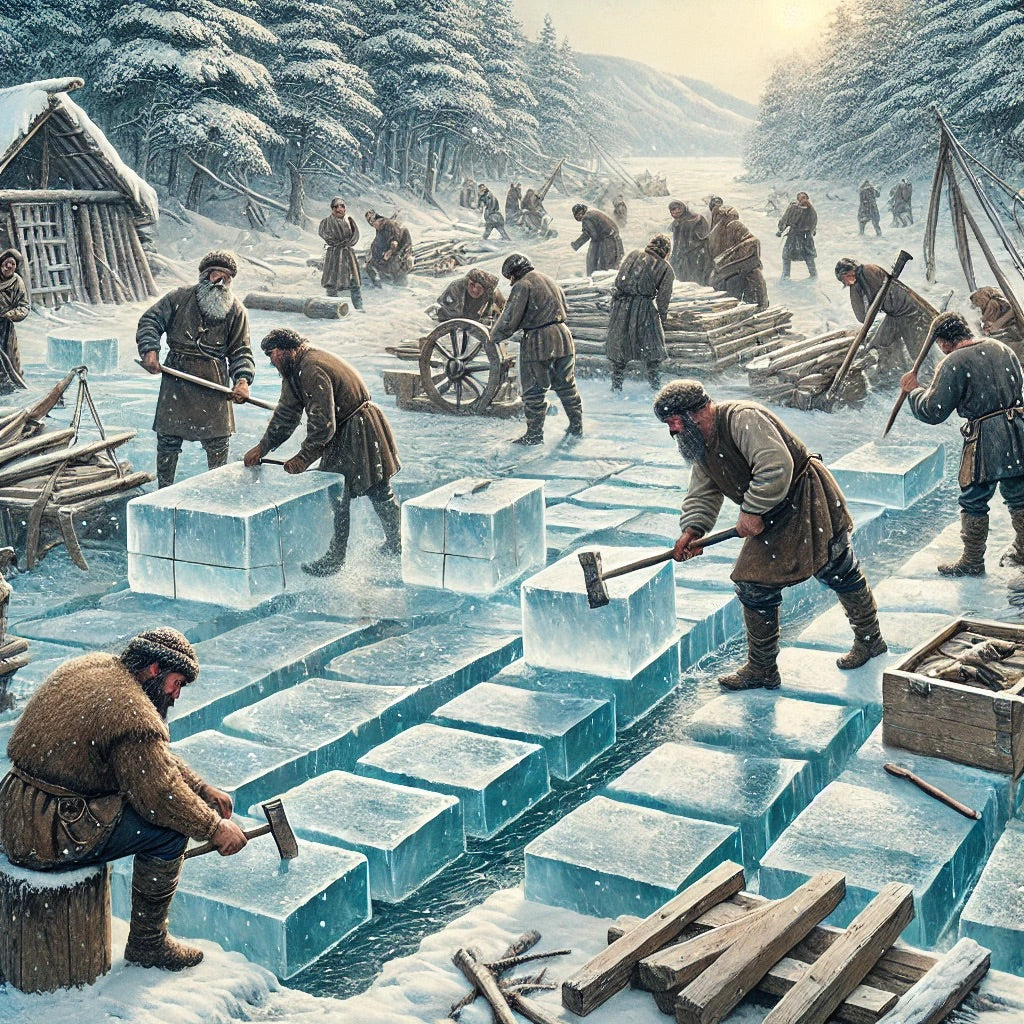The history of ice making is a remarkable tale that spans centuries and highlights human ingenuity in the quest to preserve food, cool drinks, and provide comfort in hot climates. From ancient times to the modern era, the journey of ice production has evolved from labor-intensive methods of harvesting natural ice to sophisticated, energy-efficient technologies that make ice a commonplace commodity.
In ancient civilizations, ice was a rare luxury that could only be obtained through manual harvesting and storage. In Persia, as early as 400 BCE, people built “yakhchals”—large, domed structures that served as icehouses. These buildings utilized a combination of insulation and evaporative cooling to keep ice frozen even in the hot desert climate. Snow and ice were collected from the mountains and brought to these structures, where they were stored for use during the scorching summer months. Similarly, the ancient Romans and Egyptians would transport ice and snow from nearby mountains to cool drinks and preserve perishables. This practice was not available to the general populace, as the logistics of ice transportation were both costly and labor-intensive.
The modern era of ice production truly began in the early 19th century with the rise of the natural ice trade. One of the most famous figures in this industry was Frederic Tudor, often called the “Ice King.” Starting in 1806, Tudor harvested ice from New England’s frozen lakes and rivers, shipping it to the southern United States, the Caribbean, and even as far as India. This venture was revolutionary and immensely profitable, as Tudor’s ice became a sought-after commodity in warm climates. The ice trade became an important industry, employing thousands of workers to harvest, store, and ship ice around the world. Tudor’s success spurred the development of more efficient methods of storing and transporting ice, further expanding the industry.
However, relying on natural ice had its limitations. The supply of ice was dependent on weather conditions, and a mild winter could significantly reduce the amount of ice available for harvest. This inherent unpredictability, along with the logistical challenges of shipping ice long distances, led to the pursuit of artificial ice production.
The breakthrough came in 1844 when Dr. John Gorrie, a physician in Florida, invented the first mechanical ice-making machine. Gorrie developed his machine to cool hospital rooms and treat patients suffering from yellow fever, but his invention would have far-reaching effects beyond the medical field. His machine used a compressor to condense and cool air, creating ice as a byproduct. While Gorrie’s invention was not commercially successful in his lifetime, it laid the groundwork for the development of modern refrigeration technology.
By the late 19th century, advancements in mechanical refrigeration made it possible to produce ice on a large scale without relying on natural ice supplies. German engineer Carl von Linde and French inventor Ferdinand Carré both contributed to improving refrigeration technology, allowing for widespread artificial ice production. This marked the beginning of the end for the natural ice trade, as factories could now produce ice more reliably and in greater quantities.
The 20th century saw rapid advancements in refrigeration and ice-making technology. Household refrigerators with built-in freezers became common in homes, and businesses such as restaurants, bars, and hotels began using commercial ice machines. Ice, once a rare luxury reserved for the wealthy, became accessible to the general public.
Today, ice is an integral part of modern life. From the cubes in our drinks to the vast quantities used in industrial processes, ice is produced effortlessly and on demand. Modern ice makers, freezers, and refrigeration units make it possible to create ice in a variety of shapes and sizes, and the convenience of ice production has become so ingrained in everyday life that it’s easy to forget its long and storied history.
In summary, the history of ice making is a journey from ancient innovation to modern convenience. What started as a luxury item harvested from the natural world has become a ubiquitous commodity, thanks to centuries of human ingenuity and technological advancement.


